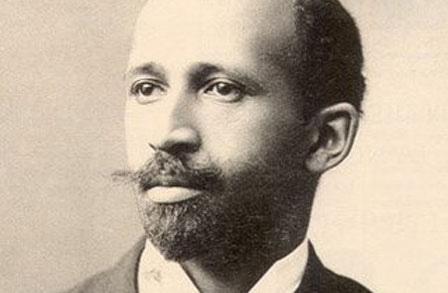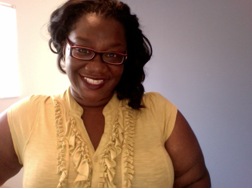
August 20, 2014
WHAT IS LEFT TO SAY?
By Tressie McMillan Cottom
In his 1934 essay, “A Negro Nation Within a Nation”, WEB DuBois wrote:
The colored people of America are coming to face the fact quite calmly that most white Americans do not like them, and are planning neither for their survival, nor for their definite future if it involves free, self-assertive modern manhood. This does not mean all Americans. A saving few are worried about the Negro problem; a still larger group are not ill-disposed, but they fear prevailing public opinion. The great mass of Americans are, however, merely representatives of average humanity. They muddle along with their own affairs and scarcely can be expected to take seriously the affairs of strangers or people whom they partly fear and partly despise.
For many years it was the theory of most Negro leaders that this attitude was the insensibility of ignorance and inexperience, that white America did not know of or realize the continuing plight of the Negro. Accordingly, for the last two decades, we have striven by book and periodical, by speech and appeal, by various dramatic methods of agitation, to put the essential facts before the American people. Today there can be no doubt that Americans know the facts; and yet they remain for the most part indifferent and unmoved.
This is not the first time that I have sought comfort in the classics. As James Baldwin once intoned, there is a kind of peace when you realize that you are neither the first nor the most mistreated in the long human history.
What is left to be said about a cop killing an unarmed teenager in the street, denying him medical care, and leaving his lifeless brown body on display for over four hours?
There is nothing new to tell white people about black life. Nothing.
Not that this kept the well-meaning from begging black folks to bleed for their confessions. They took to social media, wondering when Coates would get over his French lessons and tell them how to feel appropriately guilty. They emailed and called and texted their one black friend, asking for alms and sense of a senseless evil. I ignored them all. I hope Coates and all the Black Friends did, too. I hope you made crepes and hugged your babies and pruned your roses and made love in the club. I hope you did something human as you watched another black life be degraded and devalued for media hits. I hope you lived.
After hundreds of years of proving the humanity of black people, all non-black people should have a template to make sense of our annihilation for themselves. I wish them well in google and archives and quiet meditation but I do not want to bleed for you.
i do want to think out loud a bit on hashtagging for justice.
That’s what blackfolks did when Darren Wilson summarily executed Micheal Brown in broad daylight on August 9, 2014.
Black twitter, the affective decentralized socio-linguistic online collective, covered the shooting and the outrage using social media as a public square; tweets as chapbooks; networks as church basements. Hashtags like #mikebrown and #iftheygunnedmedown shifted media attention that was taking the usual Saturday evening break. By the time legacy media tuned in to what was happening in Ferguson, citizen journalists like Elon James were packing their bags to document it for themselves.
Black twitter shaped the media narrative.
But they were able to shape the narrative because of the conditions of new (-ish) media like NPR’s Codeswitch and Washington Post’s Post Everything. These new media verticals have somehow sped up even the 24 hour cable news cycle, which we would have once thought impossible. These outlets drew from bloggers and social media personalities who could bring with them some writing chops, an audience, and experience embedded in social media streams. Many of those were black. That is not an accident. Digital media appealed to blackfolks for the same reasons that any innovation appeals to us. It is a chance to up-end legacy structures and institutions that have shut us out. We are early adopters not to be cool but to survive.
PostBourgie and the like gifted fuddy duddy legacy media outlets with writers and thinkers who know the new media landscape. That pays off for them when something like #mikebrown and #ifiwasgunneddown pops off.
The symbiotic relationship between these verticals and their embedded actors with coded black social media movements create the conditions for blackfolks to shape media narratives. You can see this impact in some early analysis of tweets using #ifiwasgunneddown. My database shows over 50,000 tweets, reaching over 104 million timelines in four days. Over three-fourths of those tweets came from mobile apps and platforms, as opposed to desktops. Black folks were on their phones, using visual and textual ethnography to construct a counter-narrative. Preliminary network mapping suggests it was embedded (mostly non-white) new media journalists that tipped the story into mainstream media coverage.
It’s tempting to think the counter-narrative won. In some ways, it certainly put the story on the media map. But it also suggests that the conditions of media matter, perhaps now more than ever. Without NPR’s Gene Demby or Washington Post’s Soraya McDonald or MSNBC’s Joy Reid and (black voice adjacent) Chris Hayes, it is unclear that the counter-narrative would have worked. One need only look at CNN’s white out (pun so intended) of the protest that sprang up outside its studio as evidence that black journalists still matter to the coverage of black lives.
++++++++++++++++++++++++++++++++
Tressie McMillan Cottom is completing her PhD in the Sociology Department at Emory University in Atlanta, GA.
>via: http://tressiemc.com/2014/08/20/what-is-left-to-say/


